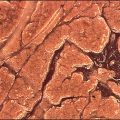Chapter 23 Facial Redness
Facial redness can be due to a variety of dermatologic causes including rosacea, physiologic flushing, telangiectasias, eczema, seborrheic dermatitis, psoriasis, irritant contact dermatitis, etc. All of these conditions have in common activation of the inflammatory cascade, which results in vasodilation and the recruitment of white blood cells. Facial redness is minimized by cosmeceuticals functioning as anti-inflammatories and barrier enhancers. Table 23.1 lists those cosmeceuticals that are currently used in moisturizers designed to improve facial redness. At present, there are no good cosmeceutical vasoconstrictors to deal with the vasoactive component of facial redness.
Table 23.1 Cosmeceuticals to minimize facial redness
| Cosmeceutical | Effects on skin physiology | Patient selection comments |
| Prickly pear | Mucilage rich in mucopolysaccharides forms protective film | Extract used in moisturizers, usually does not provide mucilage properties |
| Aloe vera | Mucilage containing 99.5% water and a mixture of mucopolysaccharides and choline salicylate | Salicylate component functions as topical anti-inflammatory, since mucilage properties lost in most moisturizer formulations |
| Bisabolol | Chamomile extract prepared by distillation | Potent anti-inflammatory in moisturizers |
| Allantoin | Comfrey root or synthetic manufacture from uric acid | Used commonly in sensitive skin formulations |
| Panthenol | Barrier enhancing humectant | Used to hydrate the skin and prevent barrier damage |
| Tea tree oil | Polyphenols | May cause allergic contact dermatitis |
| Evening primrose oil | Polyphenols | Purported to be of benefit in atopic dermatitis |
| Ginkgo biloba | Polyphenol fraction | Ginkgolides, bilobalides are active anti-inflammatories |
| Green tea | Polyphenols | Epigallocatechin, epigallocatechin-3-gallate are active anti-inflammatories |
| Saw palmetto | Polyphenols | High concentration needed for efficacy |
| St John’s wort | Polyphenols | High concentration needed for efficacy |
Designing a facial cosmeceutical treatment regimen for patients with facial redness can be a challenge. The major problem is that products are introduced to and withdrawn from the marketplace with great rapidity. For this reason, rather than discussing specific product names, I have presented a facial skin care maintenance routine demonstrating which product type should contain which cosmeceutical active to be most effective. These recommendations are listed in Box 23.1. Patients can take this list to the cosmetic counter or spa and select those products that contain the ingredients listed.
Box 23.1 Skin care ingredient recommendations for facial redness





